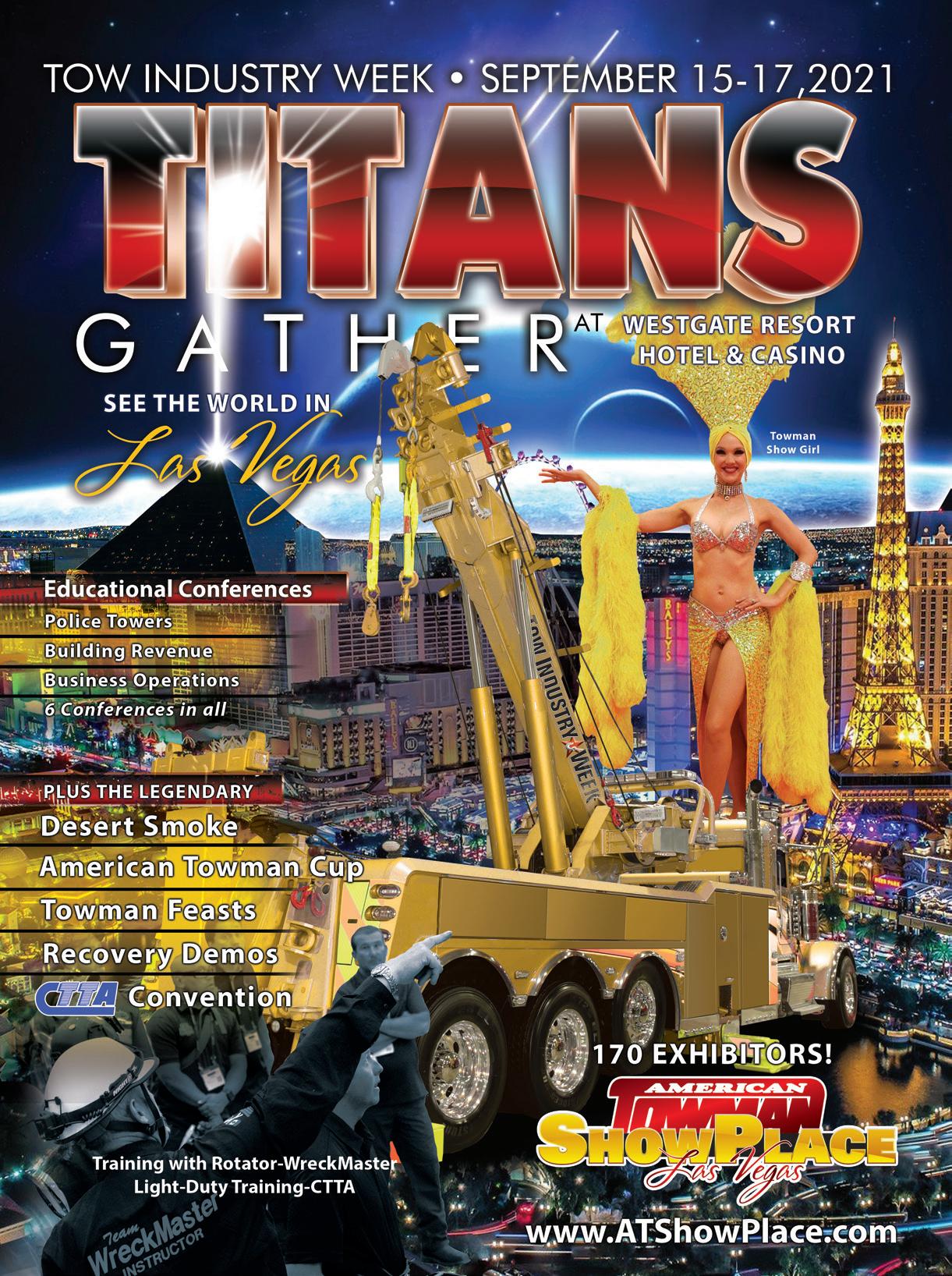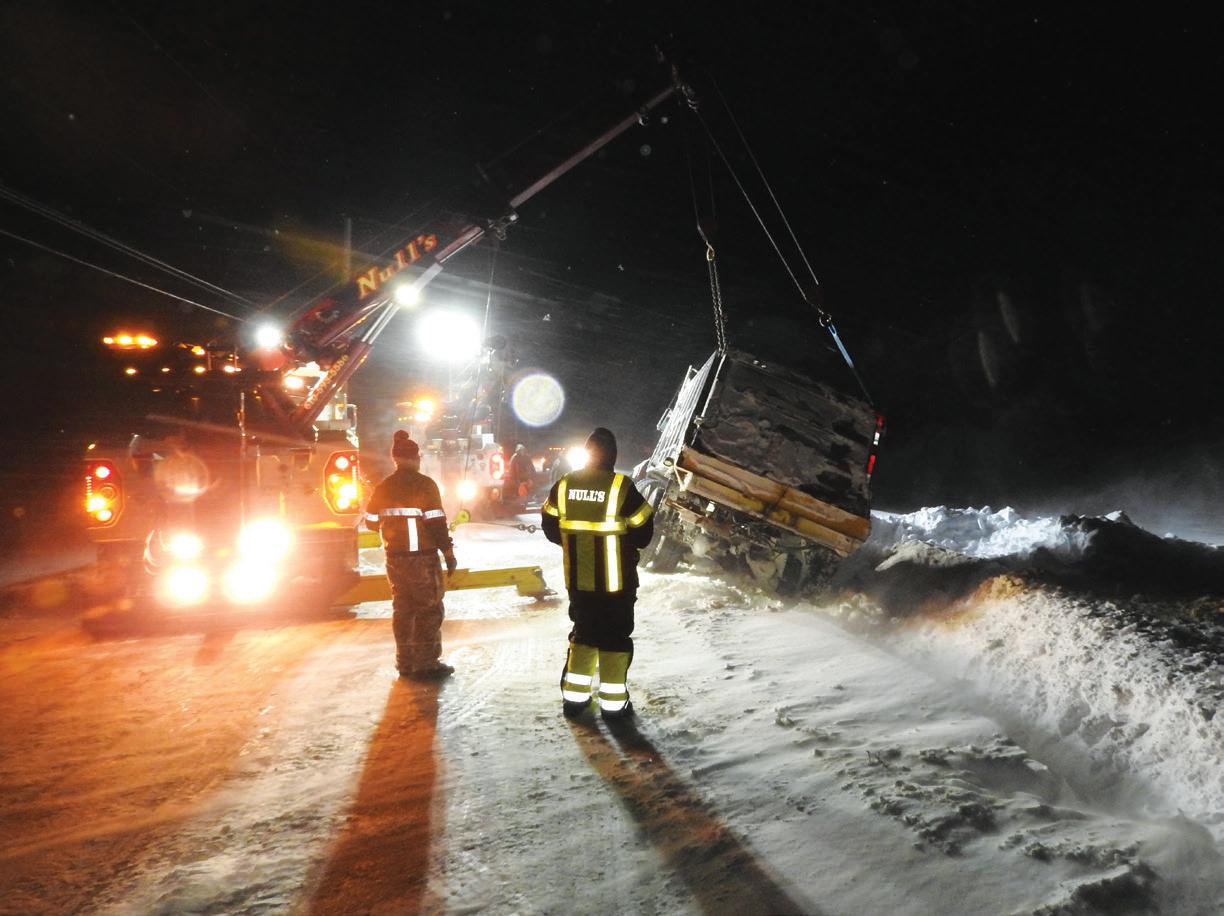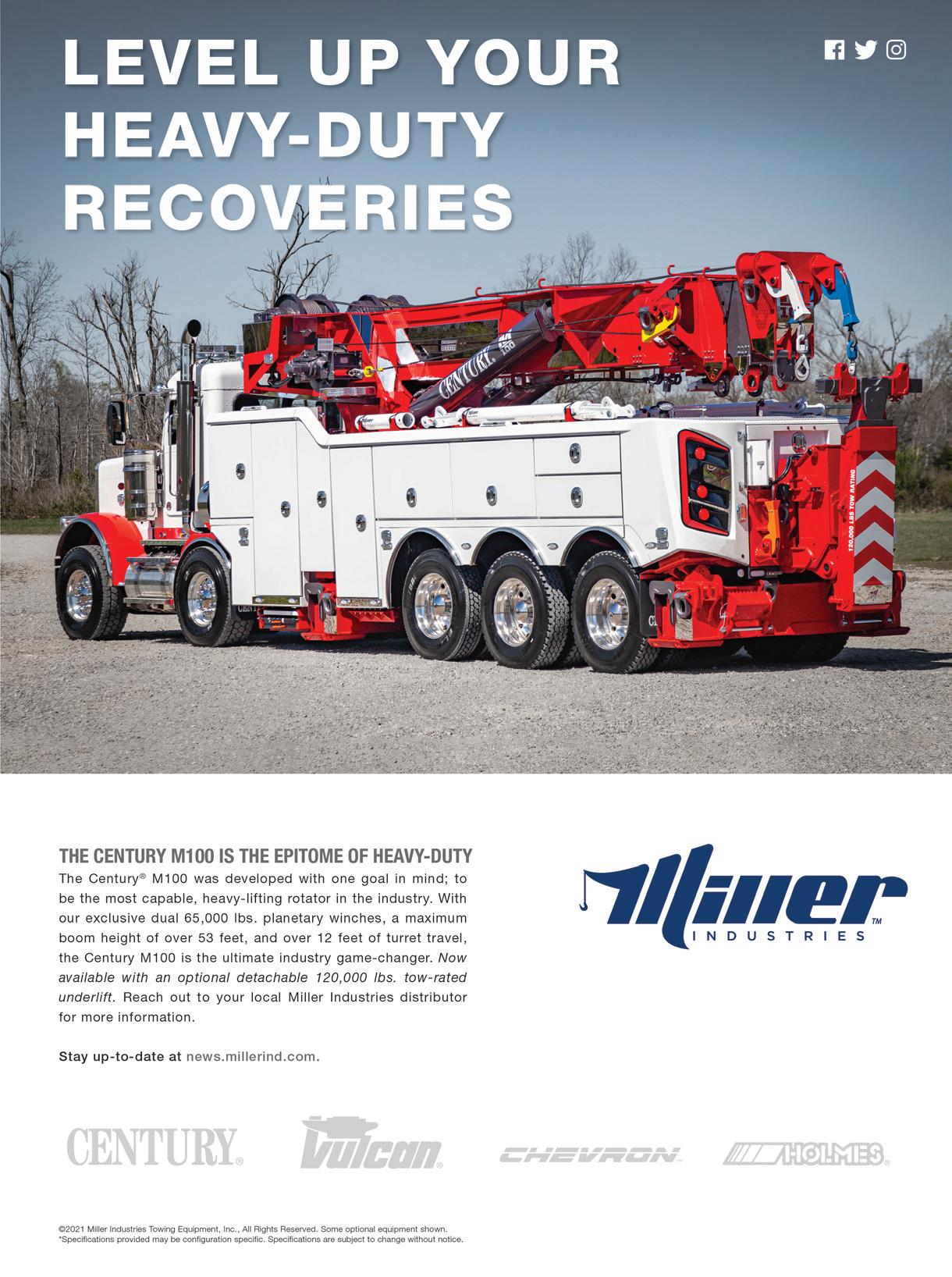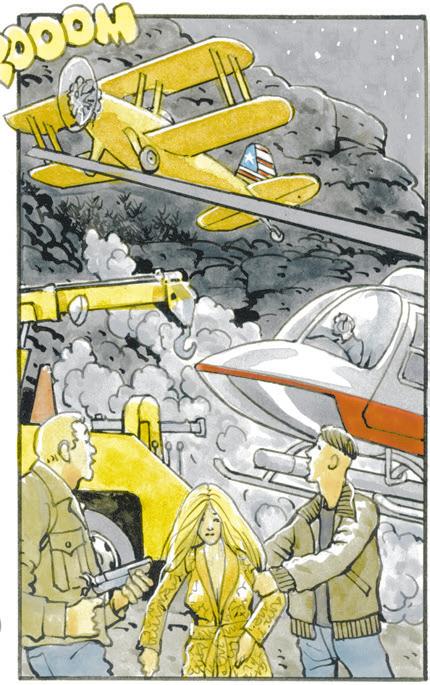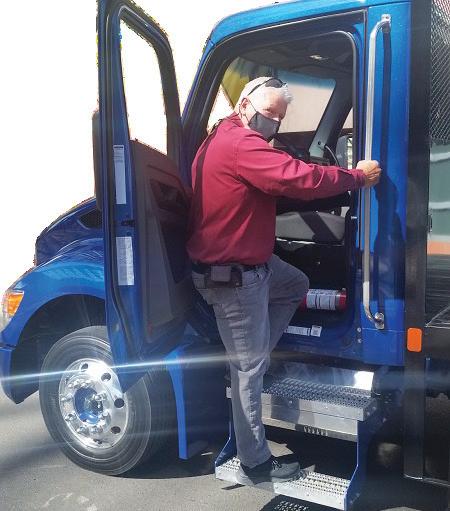
9 minute read
Chassis Chalkboard
I Test-Drive New Kenworths
By Randall Resch
Operations Editor Randall C. Resch is a retired California police officer and veteran tow business owner, manager, consultant and trainer. He writes for TowIndustryWeek. com and American Towman, is a member of the International Towing & Recovery Hall of Fame and recipient of the Dave Jones Leadership Award. Email Randy at rreschran@gmail.com.
Low Pro Class 5, Resch checks out steps and cab entry.
This narrative speaks to newgeneration, light, medium and heavy-duty trucks, where, on April 1st, 2021, I attended, Kenworth’s, “Editor’s Drive Event,” in Phoenix, AZ, sponsored by Kenworth Trucks.
CLIMB ABOARD
I reviewed five, brand spankin’ new Kenworth trucks suited to light, medium and heavy-class tow and transport operations, in a driving circuit that skirted Phoenix’s Convention Center. With a popularity explosion favoring flatbed carriers and medium-duty wrecker chassis’, I scrutinized (for you) each model carefully.
Although a Kenworth (prepped) wrecker and carrier weren’t available for review, I focused on obtainable cab and chassis’ details for industry applications. My mission; to share an unbiased observation in-how these units’ best serve towers in light and medium-duty (tow) classes where commercial CDL’s aren’t required for trucks weighing less than 26,000 GVWR.
When spec’ing cabs and chassis’, my selection criterion is: • Climb-ability entering/exiting cab • In-cab safety protection • Cab and seat comfort • Access to controls & steering • Front windshield/Mirrors and blind spots • E-Brake type/positioning • Engine/Transmission performance • Easily maintained • Drive and sway factor • Double-wrapped frames
For this day’s editor reviews, five Kenworth models represented operational needs of light, medium and heavy-tow providers; specifically, Kenworth’s new T180 (low-profile), T280 and T380 chassis respectively. With the industry’s dramatic increase favoring heavier trucks getting the most, “bang for the buck”, it goes beyond TV commercials or drooling over a competitor’s truck.
With close scrutiny from a risk management standpoint, Kenworth’s re-designed ground-to-cab steps; configured to eliminate those oh-too-frequent stumble and fall claims common to drivers and riders. Reacting to customer and owner input, the cab’s height was lowered two-inches (on certain models) with bottom-steps closer to ground surfaces, yet avoiding drag or snag.
The fuel tank’s D-shaped top step-tread was moved inward allowing for more “stepping-surface” atop the treads. True to driver and passenger safety were inside and outside (positioned) grab-handles promoting threepoint entry and exit.
All gauges and dash-features were, “ergonomically designed and positioned,” where over-reaching is no issue. Unfamiliar to me was the truck’s column-mounted gear-selector, but took only seconds to learn. In T280 ◀

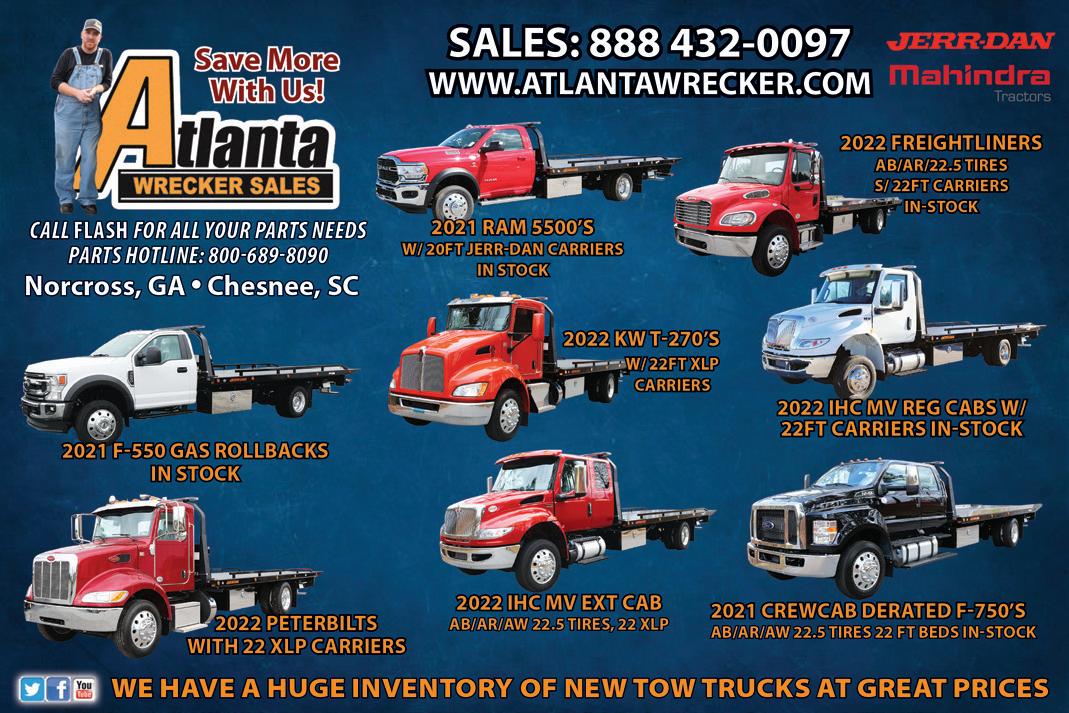
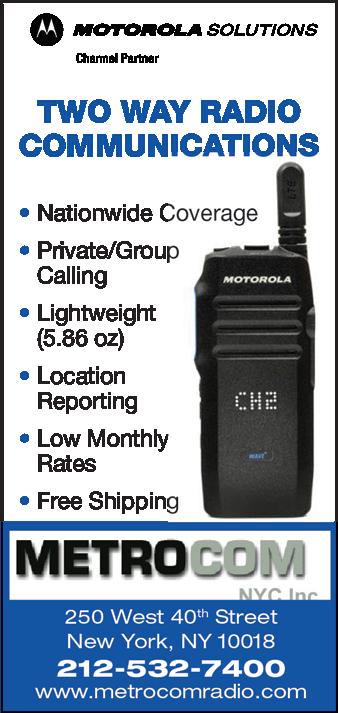
and T380 models, I noted the dashmounted, air-activated emergency E-Brake-button was inches from the shifter. The smaller T180 utilized a floor mounted, “pull-style”, emergency brake handle.
Except for the big, T480V Industrial (mixer), all models had expansive; easy-to-open aerostyled hoods allowing easy access to systems and components. For pre-trip readiness, dipsticks, washer fluid and air-drier’s were prominently accessible inside the driver’s side front-well. For headlight-bulb replacement, access is behind the cab’s inner wheelwell to eliminate take-apart surgery when changing bulbs.
INSIDE OUT
Kenworth’s total fit-and-finish is high-quality and traditionally known to its global branding. Comparably, the smaller, 19,500GVWR low-profile, T180 stake-bed lacked (driver’s) air-ride seating with no air-seating capable of shaking the fillings from one’s teeth. But, remember, a loaded truck is far smoother than an empty one.
While T180’s ride was irritatingly bumpy, its cab and appointments were of same high-quality as T280 and T380. By upgrading T180’s seating and its suspension … problem solved.
The heavier T280’s interior features and air-ride driver’s seating was extremely comfortable with fingertip control for (seat) adjustability. The High-back driver’s seats had ample padding to decrease, “Numb-Butt”, common to too much time in-the-saddle. Comparably, T180’s seating couldn’t match the comfort and support of T280’s air-ride seat.
For trucks with aerodesigned hoods, wide and ◀
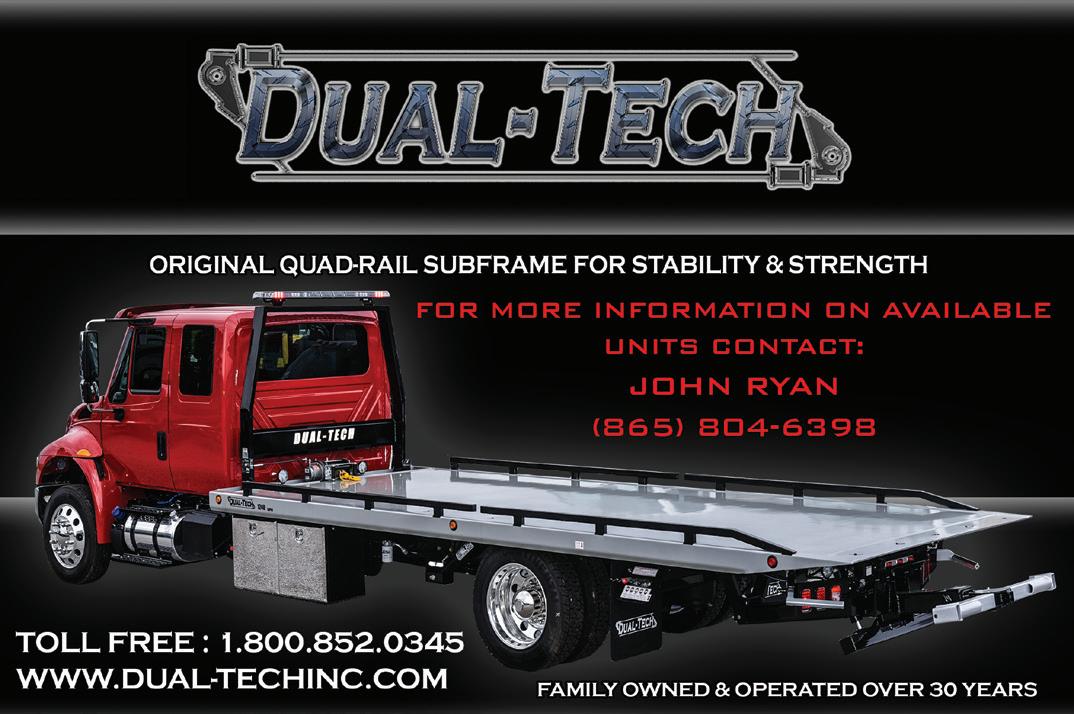

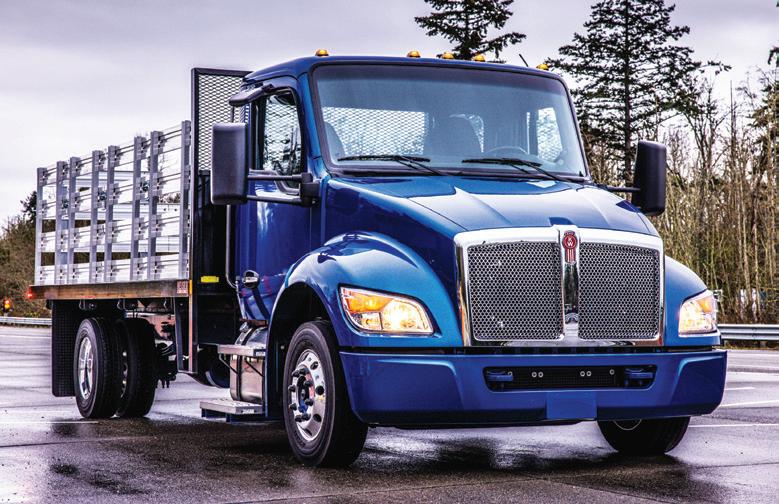
T180 Stakebed.
massive windshields provided unobstructed forward views. From the seated position, visually, there’s no extended hood to block forward view; making it important that drivers remember, “There’s plenty of truck still out-front.”
And, because we all know it’s bound to happen, a three-piece, chromed, tear-away bumper with replaceable sides and center section is standard on certain models. For that driver who tends to get stuck, standard are front-end recovery eyelets on all models.
Trucks had tall and wide sidemirrors for rearward vision noting no obvious blind spots from the driver’s position. Mirrors could pull inward; a safety feature especially valuable for tower’s working on-highway events.
From the dash, virtual gauges were soothing and easy to read with switches and controls ergonomically positioned within driver reach. Other likable features were storage cubbies across the dash, a solid mount for phones/tablets plus accessory plugs and USB ports.
Except for the T180 there was a Bendix, radar-based “fusion sensor” overseeing the truck’s position within roadway markings. If the truck strayed outside its lane, an audible alarm alerts the driver to adjust positioning.
Not mandated for commercial trucks, missing was the presence of driver’s, passenger or sidemounted (crash) air-bags. I rested easy knowing the truck’s massive bumper, engine and nose delivers another important safety feature when considering flat-faced chassis’ versus conventional truck; solid frontal protection is my personal safety preference.
TRUCKS WITH GUTS
Kenworth’s, “tag-on systems”, allow easy marriage of tow, transport and recovery equipment. Massive frame-rails provide a solid platform for fitment mounts. Extended frames are available to meet carrier and equipment (mounting) requirements.
I focused on whether or not systems could handle extended idle-times typical to loading and recovery events. All models had robust radiators and high-output alternators for better-than-efficient cooling and increased sustainability for powering strobes, flashers and emergency lighting. Electrical systems were well-wired allowing tow accessories and junction boxes to be added.
And, if you’ve got the itch, “for the bling”, chrome addons are available. Exterior paint colors are limited with certain models available in grey, white, crimson and, “Cerulean Silk Blue”, Kenworth’s most striking color, meaning, “heaven, sky”.
For heavier, two-car carrier (transport) capability, or wrecker (towing) configurations, my pick was Kenworth’s, T280 series, standard cab, Class 6 (GVWR’s 19,501 to 26,000). Note: Lowpro T180’s wears 245/70R 19.5 Bridgestone tires versus T280’s taller, 295/75R 22.5 Continental’s. The frame height (difference) ◀



is noticeable and may challenge carrier load-angles.
For industry’s gearheads, Kenworth’s T280 series mediumduty (class) truck meets “lightduty” (industry) applications. Power comes from an, “Award Winning”, 300 to 325-hp Paccar/ CUMMINS PX-7 engines and Paccar’s TX-8, eight-speed, automatic tranny. Kenworth’s, AG210L single-axle, 16k rear airride suspension creates a super smooth ride with SteerTek’s, 10k front-axle, providing solid and responsive steering. For snowbound states, four-wheel drive is available.
The T280’s heavier, two-car (capable) configuration makes transporting pickups, doubleloading police impounds, or delivering auction vehicles within load ratings. Especially true to todays’ heavier SUV’s and Urban Mom Mobiles, you’ll appreciate the T280’s heavier platform.
And, to complement, “recovery potential”, for carrier operations, I envision a carrier body and sidepuller device married to T280’s chassis. For wreckers, “more meat on the bones”, means wreckers stay in-place when heavy pull commences. Higher GVWR’s adds tow-ability while keeping necessary nose-weight allowing heaver vehicles to be towed with minimal effort.
As in all of Kenworth’s, newgeneration trucks, there’s no getting’ around the, “dreaded DEF system”, (Diesel Exhaust Fluid); a system we’ve come to dislike. The
T180, 19,500-GVWR low-pro, has a smallish 5.5 gallon DEF tank, while the 26,000-GVWR, T280, has a larger 15-gallon tank. For clean-air states like California, “Certified Clean Air” stickers note their in-compliance status.
Designed with comfort and
ease in-mind, I give T280 double thumbs-up
between 300 and 325-hp engines.
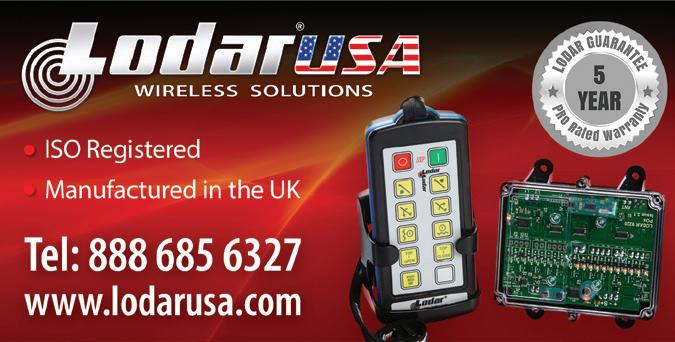
As I was privileged to participate in this editor’s drive event, I’ll share that Kenworth’s commercial productline exceeded my requirements. These trucks are, “Sure to wow”, savvy tow owners.
I found T280, “User-friendly”, to allow tow companies to work with increased style and efficiency. Designed with comfort and ease inmind, I give T280 double thumbsup for ride, comfort and safety, including noting recognizable performance differences between 300 and 325-hp engines. I couldn’t resist, “stomping the accelerator pedal”, where PACCAR’s TX-8, eight-speed automatic transmission shifted seamlessly. Because auto-trans are user-friendly, the days of burned-up clutches are long gone.
It’s obvious my review favored the T280 for wreckers and carriers weighing up to 26,000-GVWR. For medium-duty selection at 33,000GVWR, T380 was beyond stout in-meeting higher GVWR needs. T380 had the same rideability found in T280.
While I conclude that for the trucks I drove, each was solid, distinctive and befitting to Kenworth’s reputation. I was impressed with ease of operation, safety-features, comfort, drive-ability and its sexy, European appearance.
As for cab design and ride quality, Kenworth’s aero-cab reduces interior noise up to 50-percent. Except for the basic, non-air-ride driver’s seating in Class 5’s, T180; I found T280’s ride superbly-smooth and virtually noise-free … “Forgetaboutit.”
Even with the high and lengthy cube riding atop T280’s rear and T380’s high-reach bucket-truck, I appreciated their solid, stable rides. For tower’s requiring, “big-boy bones”, T480V, is nothing less than all beast; powered by its torque-capable PX-9, 380-hp engine.


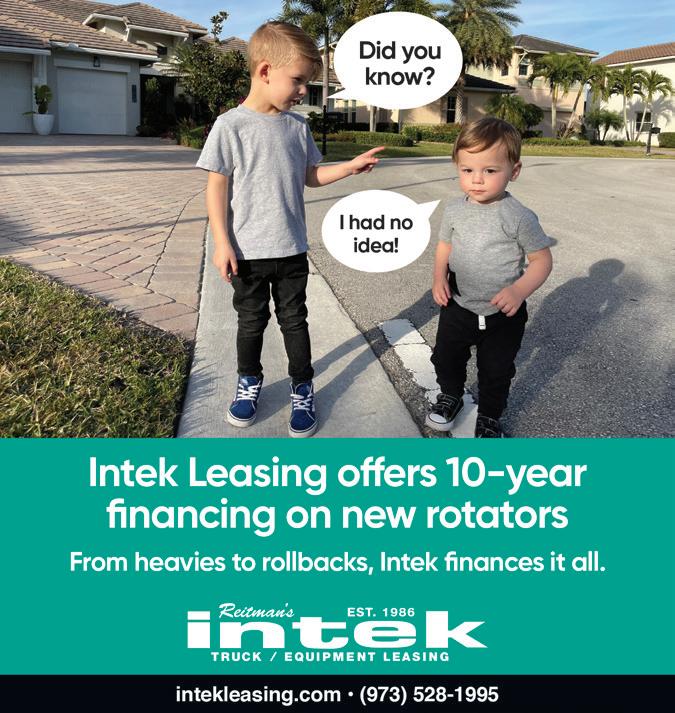

LITE-IT UP
WITH CUSTER PRODUCTS
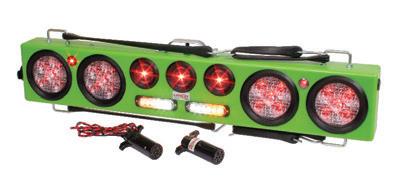
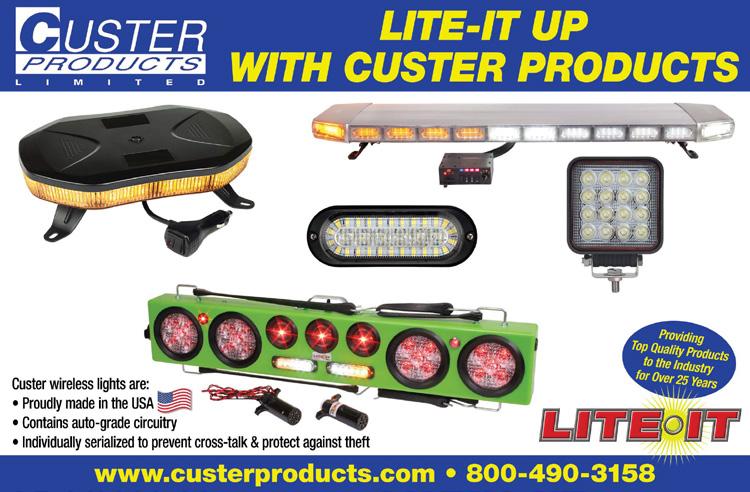

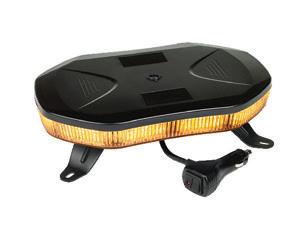
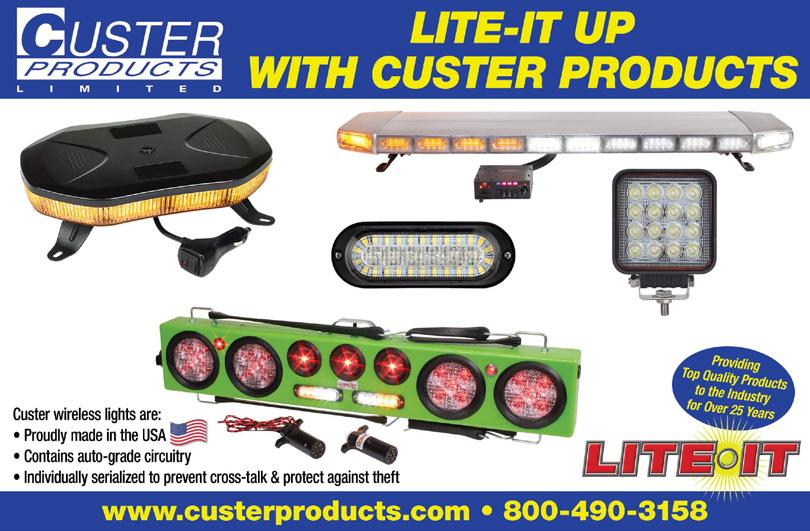
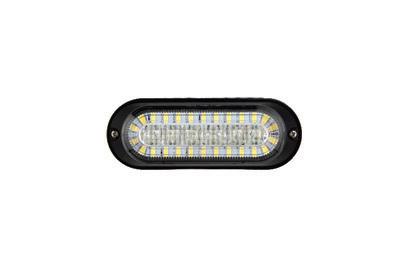
www.custerproducts.com • 800-490-3158
Driver Technologies Selects HONK
HONK Technologies, the digital platform connecting drivers and towing professionals, announced it is now managing a co-branded roadside assistance program for Driver Technologies. This New York-based tech company provides an artificial intelligence-based automotive-technology that transforms a driver’s phone into a dashcam designed to improve road safety and lower insurance costs.
Driver is a hardware-free mobile app that allows users to video record their trip while receiving audio alerts such as collision warnings and distracted driving which are powered by computer vision and telematics. Driver also provides customers with augmented reality, turn-by-turn navigation, seamless integration with mobile voice assistants, entertainment controls, roadside assistance services, and insurance discounts of up to 50% from more than 40 national providers based on a privacy-controlled, “DriverScore.”
With this partnership, HONK enables Driver to offer their users a seamless app experience through an integrated co-branded roadside assistance solution.
“Our Dashcam App includes ‘Driver Roadside’ from a single click of a button so users can quickly and easily order roadside assistance in the event of a vehicle emergency, breakdown or accident,” said Rashid Galadanci, CEO at Driver Technologies. “HONK was the only partner that offered us a complete, frictionless solution that was Driver-branded. Our users no longer need to click off to a third-party site for roadside service requests, which created some confusion and additional out of pocket expenses for customers.”
CEO of HONK, Corey Brundage, states that his company’s network of service providers extends to over 75,000 service vehicles across the U.S.
